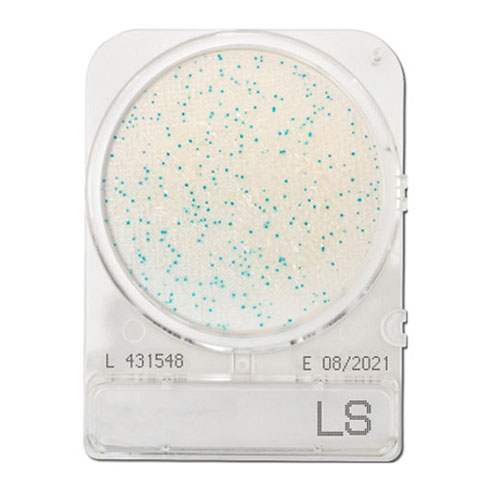Compact Dry LS (Listeria species)
Compact Dry LS is a simplified medium to determine Listeria species by the combination of selective agents and chromogenic substrates.
Incubation
- Manufacturer’s recommendation: 35±1℃ for 24±2 hours
Result Interpretation
- Count light blue/blue colonies for Listeria species.
Procedures
























